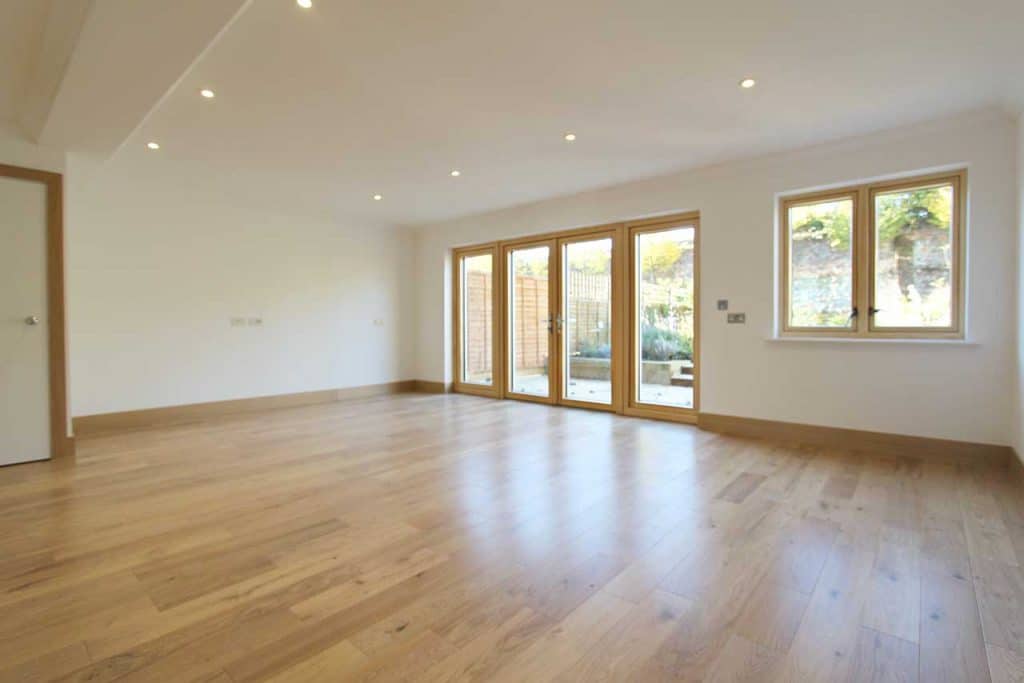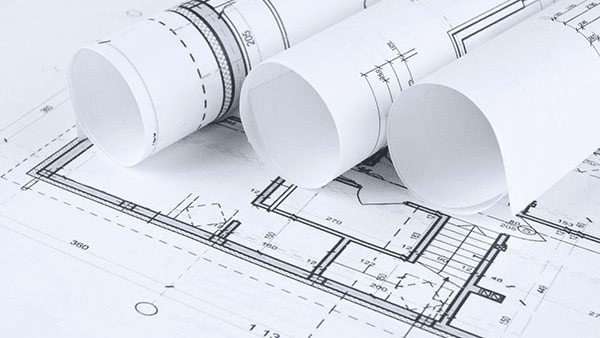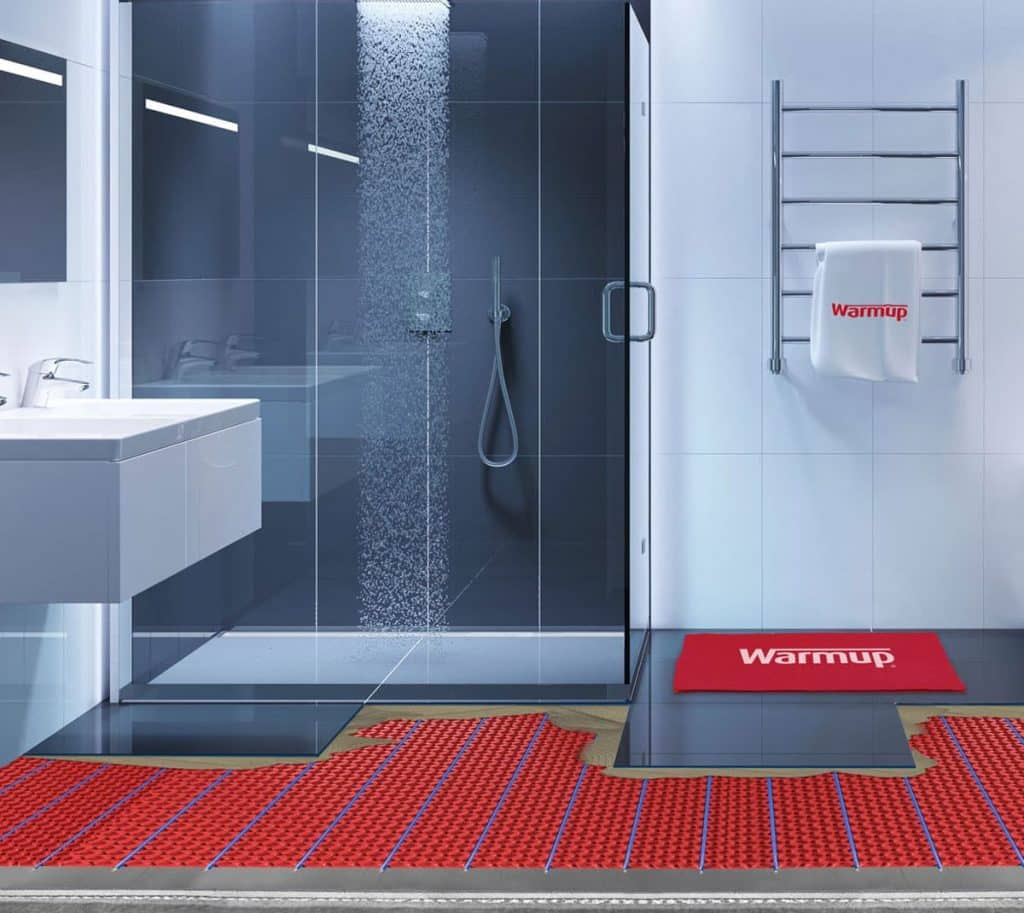So, you’ve decided you want to heat your home with energy-efficient underfloor heating but how do you choose between an electric and water-based system? While both systems can be used in almost any application, certain factors of your project may mean that one or the other may be better suited for your home.

Comparing electric and water underfloor heating systems
|
Electric System |
Water System |
|
|
How does it work?
|
Electric heating wires or heating mats connected to mains electricity supply. | Heating pipes pump water in underfloor circuits heated by your heat source. |
|
Project type?
|
Ideal for renovation projects and for use in single rooms. | Recommended for new-build projects and larger spaces. |
|
Running costs?
|
More expensive than water systems due to tariff prices. | Lower long-term running costs than electric systems. |
|
Installation costs?
|
Cheaper to install than water systems. | More expensive to install but offset by lower running costs. |
|
Installation time?
|
Rapid installation times. Some systems can be installed in 30 minutes. | Take longer to install. |
How does an underfloor heating system work?
There are two kinds of underfloor heating systems that you can install in your project: water or electric systems. Both use radiant heat technology to gently warm a room from the floor up and into the people and objects in a room as opposed to central heating systems which focus on heating just the air of a room, creating greater energy wastage. Floor heaters also provide much greater design freedom as visible pipes or bulky radiators are no longer required.
Electric
Electric floor heaters are available as either a heated mat or heating cable-based system and both convert electric energy into radiant warmth. Heating mats use ultra-thin electric heating wires pre-attached to a ready-sized mat which can simply be rolled out and adhered to the subfloor. Heating cables take the form of a free-form electric wire which can be directly installed onto or within the subfloor.
Water
Water systems, also known as hydronic underfloor heating or wet floor heating, involve pumping water, heated to an optimal temperature by a heat source (a traditional boiler or heat-pump) through underfloor heating pipes, also known as circuits, which are laid within or on top of the subfloor beneath your floor finish. Warmup offer a wide array of hydronic systems and heating pipes for all kinds of projects.
What kind of project is floor heating suitable for?
If you’re considering floor heating for your home, the first thing to look at is the type of installation; are you looking to renovate and therefore retrofit a system or are you installing within a new-build?
Electric
If you are working on a renovation project, electric underfloor heating may be more suitable as it does not significantly increase the floor height. The Loose Wire System features a 1.8mm heating cable which can be fitted within a layer of levelling compound or adhesive and so has no affect on floor build-up. Electric systems are also preferable if you’re installing a heating system in just one or two rooms.
Water
Water systems are typically recommended for new-build projects where the system will be the primary source of heat throughout the house. Most systems require installation within a thick layer of screed leading to a greater system depth compared to electric heaters however there are low-profile hydronic systems available, such as Warmup’s Total-16 System that are suitable for renovation projects.
What kind of project are you interested in?

Can I install underfloor heating in my home?
The location of an underfloor heating installation in your home can also have an impact on the type of system you can, or should, get.
Electric
Electric systems are perfect for use as primary heat sources in small rooms such as bathrooms or as secondary heat sources in larger spaces. Heating a large area with electric underfloor heating may not be desirable as energy-efficiency is achieved in large areas with water underfloor heating used with an air or ground source heat pump. That said, you should always conduct a heat loss calculation and choose an underfloor heating system that provides more heat output than the maximum heat loss. However, installing high-quality floor insulation with an electric heater greatly enhances the efficiency of the system and aids in reducing heat-loss.
Water
Water based underfloor heating is generally recommended for installation on the ground floor of a project with good insulation or a system such as our Econna Joisted Floor System is ideal for use over battened or suspended timber floors on upper levels. If you’re renovating and using a low-profile system, it may be difficult to reach enough heat output from a low build water-based system if the subfloor is not sufficiently insulated. All of Warmup’s hydronic systems come with accompanying insulation materials to help reduce heat-loss.

How much money can I save?
Floor heating uses less energy than central-heating systems by running at lower temperatures than radiators, whilst producing the same level of warmth. This increased efficiency results in lower long-term running costs than traditional heating systems. Running costs will vary on your home’s construction, its insulation, your energy tariffs and how you control your heating.
Electric
Due to current energy tariffs, the cost of running an electric floor heater will be slightly higher than a water system but you can expect to pay from as little as £1 per week to heat your bathroom with a Warmup heater.
Water
Hydronic heating systems provide lower long-term running costs compared to electric systems and using a more efficient heating source such as an air source heat-pump can bring even greater savings. Controlling an underfloor heating system with a Warmup Smart Thermostat also unlocks even bigger savings on your energy bills.
What are the installation times?
Installing floor heating in your project is often simpler than you may think but all systems should be installed by a fully-qualified installer who was worked with floor heating before. All Warmup products are covered by extensive warranties for your peace of mind, including our renowned SafetyNet Installation Guarantee which protects you against any accidental damage caused to a Warmup system during the installation process.
Electric
Electric systems offer rapid installations times with some products being able to be installed in under 30 minutes. Electric heaters utilise a wide range of installation techniques including the self-adhesive backing of our StickyMat and DCM-PRO electric systems.
Water
Water systems often take longer to install than electric systems, with time needed to test the system, the flow and pressure of the water and, in the case of ‘wet’ installations, waiting for the layer of screed to dry before installing your floor finish.

What are the installation costs?
When choosing a system, it’s worth investigating the cost difference between a professional plumber installing and connecting a wet system to your boiler versus a qualified electrician wiring the electrical system to the mains supply. Your own project parameters will dictate which is preferable. You can expect to pay around £200 – 300 per day for a qualified tradesperson to install a heating system in your home.
Electric
Electric floor heaters provide great value for money. Installing our Loose Wire System in a 4m² bathroom with accompanying insulation and a Warmup Thermostat would be approximately £450 + VAT RRP.
Water
Hydronic systems are more expensive to install but cheaper to run in the long-term. If you’re thinking about specifying a water system, get in touch with our Projects Division who can work with you in designing and installing a bespoke system perfect for your needs.
You may also be interested in:
What is the difference between a ‘wet’ and ‘dry’ installation?
Underfloor heating systems offer either a ‘wet’ or ‘dry’ installation method; ‘wet’ meaning the system requires a layer of screed to function and ‘dry’ meaning a screedless installation.
Electric
The Inscreed Cable electric heater is the only system that requires a deep layer of screed, whilst most of Warmup’s other electric products only require the use of tile adhesive or levelling compound. The Foil Heater can be installed totally dry.
Water
Water systems such as the Clypso and Nexxa Panel, require being installed within a layer of concrete screed. Other solutions like the Tectora Joisted Floor System or Contura Floating Floor System can be installed ‘dry’ without the need for screed.
What would you like to read next?
Thinking of installing a new Hydro heating system?
Find out more about installing water underfloor heating systems




![Thumbnail [200x250]](/wp-content/uploads/Electric-Category-Page-Image.jpg)
![Thumbnail [200x250]](/wp-content/uploads/Hydronic-Category-Page-Image-1.jpg)